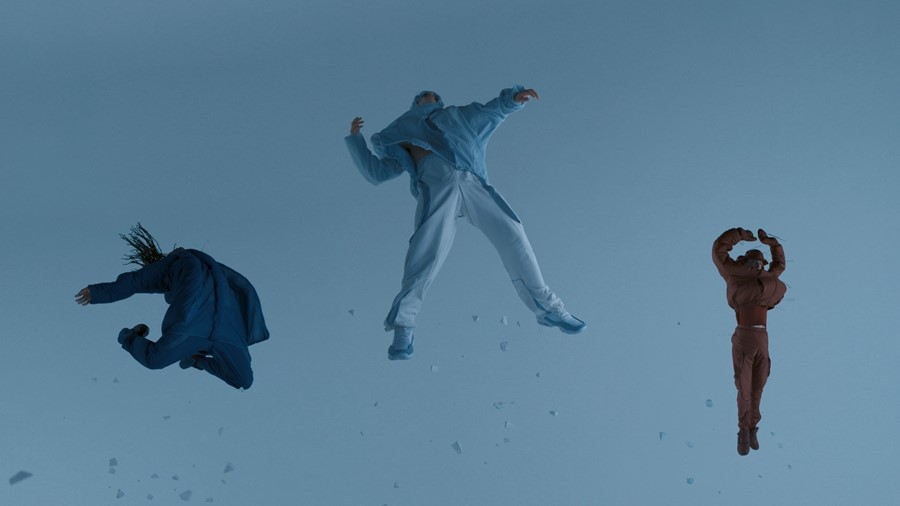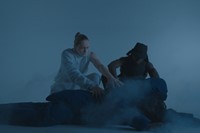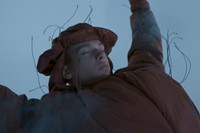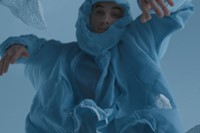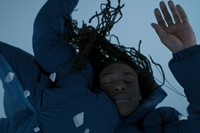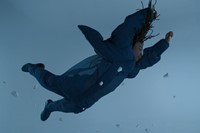Exclusively on AnOthermag.com, the premiere of Saul Nash’s transfixing new short film Shelter, directed by Fx Goby
Saul Nash wants his clothing “to feel like air”. Coming from a background in dance, the London designer makes clothing that suggests movement; that alters to the wearer’s body; that can be unzipped or adjusted to allow for the kind of expression Nash feels when he is choreographing or dancing himself. Dance remains an integral part of his practice: his runway shows, staged as part of Fashion East, always incorporate movement that is enacted by a group of dancers, many of whom he has known since his teens.
In 2018, Nash released Static Motion on NOWNESS, a short film that captures dancers moving in slow motion amid a London cityscape, wearing the designer’s first-ever collection. Directed by the Emmy-nominated filmmaker Fx Goby, Nash’s partner, the idea was to “show that grace can be found everywhere,” as Goby said at the time. Now, they have come together once more to create a new film, Shelter, another transfixing short which explores the idea of self-liberation through levitation, soundtracked by musician Lafawndah and featuring Nash’s Autumn/Winter 2020 collection. “When you move it feels like freedom,” says Nash.
Here, alongside the premiere of the film, exclusively on AnOthermag.com, Nash explains Shelter in his own words.
“We created the film the day after the show. My partner, Fx Goby, is a filmmaker – he created the film Static Motion, which we showcased as part of my first season on NOWNESS. This, I wouldn’t call an extension of that – it’s quite a different experience. This one was shot in the studio, whereas the other one was shot on the street. And this time we planned ahead, because it was the first time we could think about exploring and capturing the collection within a different context. Usually, it’s been quite on the day – ‘let’s go out and film’. This is the first time that we planned and we had a lot of friends that helped us to make it happen.
“The guys who were in the film are friends; it was fun because it was also a chance to debrief after the show itself. A lot of the [dancers I work with] I’ve known for quite a few years now. Remy I met because when I was a teenager at the dance company, and the dance company featured lots of different dancers from London – many of the dancers had a hip-hop background, but the other half of them had a contemporary background. In the dance community a lot of people connect and disconnect at different stages, and we often have mutual friends.
“[Community] is important. Especially when we cast people for the shows; I’m very much aware of the people who have been part of the journey from the beginning. Just because I find that it’s a lot more than just the brand, we’re building a relationship. And also, it’s quite nice because we all invest the same level of emotion to what we are doing; we really care about the thing we are doing together.
“In the show, we featured stagehands. When you saw them on the catwalk, you felt a kind of intimidating presence from them. But actually, when they came into contact with the dancers, their job was to liberate them and uplift them. And it’s kind of a message of how a group can uplift you. Or how they can be perceived one way but actually they’re working together to instill confidence in one another. [Working with longtime collaborators] has provided the space for self-liberation ... I think this idea of uplifting one another is very important because dance uplifted me to continue and pursue what I've got to do. [Dance] is about being comfortable with your own body and also being able to be comfortable around other people. You know, it pushes your boundaries.
“[For this film] it was quite a different process. The first film we did was more like about improvisation, so it wasn’t about kind of telling them how to be, but enabling them to tell their story or express themselves. This time Fx Goby had the treatment that in mind, in the sense of he wanted it to show like air or the men levitating. It was something that I’ve always wanted to feel for my clothing.The film itself, it became less about the men moving or necessarily being choreographed but different ways of landing.
“[Levitation] is a metaphor for self-liberation. Freeing yourself of the weight. When you move it feels like freedom. And that really was something that in my first manifesto I wanted you to show when you wear the clothes, the clothes have to feel like air. If you fold them up, they’ll float down.”
